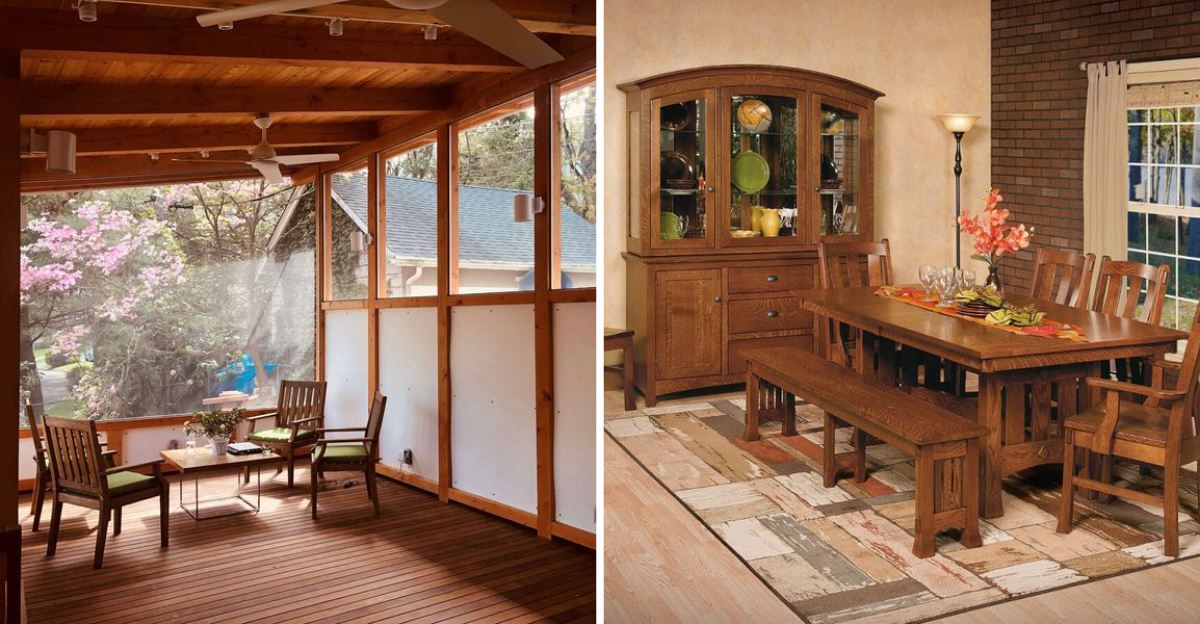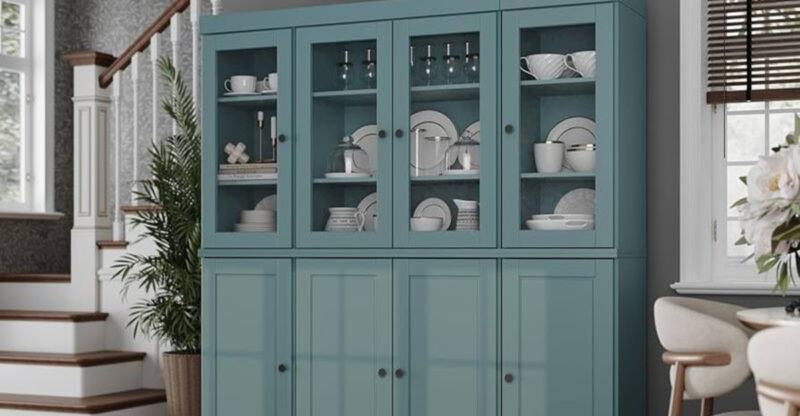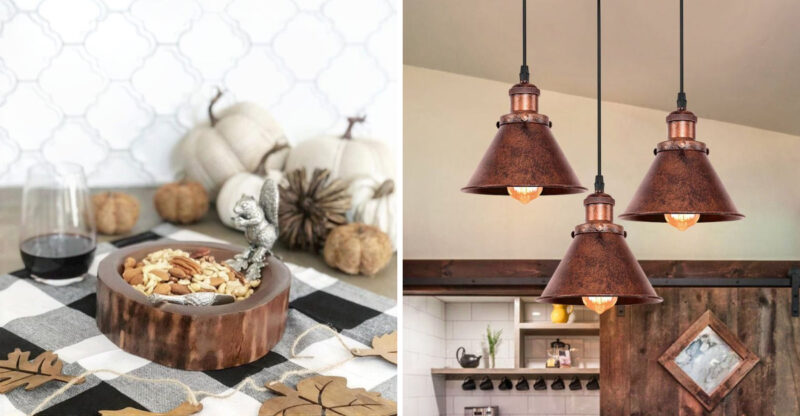17 Charming New England Home Practices That Boomers Refuse To Give Up

New England homes have a special character that reflects decades of tradition and family values. Baby boomers who grew up in this region developed certain habits and practices that they still hold dear today.
From formal dining rooms to paper filing systems, these traditions connect them to their past and give their homes a unique warmth that newer trends just can’t replace.
1. Formal Dining Rooms
Most modern homes skip the formal dining room entirely, but boomers aren’t giving up this treasured space. It’s where holiday meals happen and where families gather for important celebrations. A 2024 survey found that over 65% of boomers regularly use their separate dining room, compared to just 32% of younger homeowners.
When grandchildren visit or special occasions arrive, that formal dining room becomes the heart of the home.
The tradition of sitting down together at a proper table matters deeply to this generation. They remember their own childhood meals in similar rooms and want to pass that experience forward.
2. Collectible China Cabinets
Those glass-fronted cabinets filled with delicate dishes tell family stories that span generations. According to 2023 research, 58% of boomers still own and use a china cabinet, while fewer than 20% of homeowners under 40 keep one. Each piece of china often came from a grandmother or was received as a wedding gift decades ago.
Younger folks might see these cabinets as dust collectors, but boomers view them as memory keepers. The pattern on those plates connects them to Sunday dinners from childhood.
Polishing that crystal brings back memories of learning proper table manners from their mothers.
3. Wall-to-Wall Carpeting
Hardwood floors might be trendy now, but many boomers prefer the softness beneath their feet that carpet provides. The 2024 U.S. Flooring Market Report revealed that 59% of homeowners over 60 choose carpeted living spaces. Comfort and warmth rank as their top reasons for this choice.
Getting out of bed onto a warm carpet beats stepping onto cold wood any morning. Carpeting also reduces noise throughout the house and feels safer for aging joints.
Though younger generations love showing off their refinished hardwoods, boomers appreciate the practical coziness that wall-to-wall carpet delivers year-round.
4. Paper Files and Document Storage
Digital storage might rule the modern world, but boomers trust physical paperwork more than cloud systems. According to the Federal Reserve’s 2023 survey, 72% of boomers maintain paper records for taxes, medical bills, and legal documents. Only 28% of millennials and Gen Z do the same.
There’s something reassuring about holding an important document in your hands. Computer crashes and hacking don’t threaten papers locked in a filing cabinet.
Boomers grew up organizing everything into folders, and that system still works perfectly for them today, even if it takes up an entire closet or spare room.
5. Dedicated Guest Rooms
Having a room that stays ready for overnight guests matters greatly to boomer homeowners. HomeAdvisor’s 2024 data shows 63% of boomers maintain a dedicated guest bedroom, while only 19% of younger homeowners do. That room might sit empty most of the year, but it’s always prepared.
When adult children visit or old friends come to town, there’s pride in offering them a comfortable private space. Younger generations convert spare rooms into home gyms or offices, but boomers value hospitality above efficiency.
Fresh sheets stay in the closet, and extra towels wait in the bathroom, because you never know when someone might need a place to stay.
6. Full-Sized Appliances and Extra Freezers
Compact kitchens appeal to younger buyers, but boomers stick with full-sized appliances and often add a second freezer. The Association of Home Appliance Manufacturers found that 54% of boomers own a secondary freezer or fridge, nearly double the rate for homeowners under 40.
Buying in bulk saves money and ensures you’re prepared for anything. That extra freezer in the garage holds sale items, garden vegetables from summer, and enough food to feed a crowd without warning.
Smaller appliances might look sleek, but they don’t hold enough groceries for someone who learned to stock up during uncertain times.
7. Heavy Wood Furniture and Antiques
Solid wood pieces built to last forever still anchor many boomer homes across New England. The 2024 Furniture Trends Report found 62% of homeowners over 60 prefer traditional, heavy furniture, compared to less than 25% of younger folks. These aren’t just pieces they’re investments that appreciate over time.
Particle board furniture from big-box stores doesn’t compare to the craftsmanship of real wood. Many of these antiques came from parents or grandparents and carry sentimental value beyond their monetary worth.
Moving them takes effort, but their durability means they’ll outlast any trendy lightweight alternative by decades.
8. Screened-In Porches
Summer evenings on a screened porch represent pure New England living for boomers. Fresh air flows through without mosquitoes crashing the party. These spaces serve as outdoor rooms where families gather to watch thunderstorms roll in or enjoy morning coffee surrounded by nature.
Building codes and homeowner associations sometimes discourage adding porches now, but boomers who have them refuse to convert the space. Ceiling fans keep the air moving on humid nights.
Comfortable furniture turns the porch into an extension of the living room for half the year, creating memories that last long after summer fades into fall.
9. Clotheslines and Air-Drying Laundry
Nothing beats the fresh smell of sheets dried outdoors in the New England sunshine. Boomers remember helping their mothers hang laundry every week, and many continue this practice despite owning perfectly good dryers. Sun and wind provide natural whitening and eliminate odors better than any chemical product.
Dryers use expensive electricity and wear out fabrics faster than air-drying. On beautiful days, why waste energy when nature does the job better?
Hanging laundry outside connects boomers to simpler times and gives them an excuse to spend time in their yards, even if neighbors think it looks old-fashioned.
10. Preserving and Canning Seasonal Produce
Rows of colorful mason jars line basement shelves in countless boomer homes throughout New England. Home canning peaked decades ago, but many boomers learned the skill from their parents and never stopped. Those jars contain tomatoes, pickles, jams, and applesauce made from garden harvests or farmers market finds.
Store-bought canned goods can’t match the flavor of homemade preserves. The process takes time and effort, but it ensures quality ingredients without mysterious additives.
Opening a jar of strawberry jam in January brings back memories of summer sunshine, making all that work worthwhile for those who value self-sufficiency.
11. Keeping Encyclopedias and Reference Books
Search engines answer questions instantly, but many boomers still keep encyclopedia sets on their shelves. These leather-bound volumes represent knowledge you can hold and browse without batteries or internet connections. Britannica might have stopped printing, but existing sets remain treasured possessions.
Looking up information in a physical book creates a different learning experience than scrolling through websites. You discover unexpected facts on nearby pages while searching for your original question.
Younger family members might laugh at these outdated references, but boomers appreciate having reliable information that doesn’t depend on WiFi signals or subscription fees.
12. Maintaining Landline Telephones
Cell phones dominate communication now, but many boomers keep their landlines active despite the monthly cost. Power outages don’t affect corded phones, and call quality stays consistent without dropped signals. During emergencies, that reliable connection provides peace of mind worth paying for.
There’s comfort in knowing your phone number hasn’t changed in thirty years. Friends and family can always reach you at the same number they’ve memorized for decades.
Younger generations might find landlines pointless, but boomers value the dependability and clarity that these phones deliver, especially during important conversations that shouldn’t get interrupted by poor reception.
13. Displaying Family Photo Albums
Photo albums packed with printed pictures cover coffee tables and fill shelves in boomer homes. Digital photos might live on phones now, but physical albums let you flip through memories without charging cables. Wedding photos, baby pictures, and vacation snapshots document entire family histories in tangible form.
Looking at a screen together doesn’t create the same experience as gathering around an album. These collections survived decades and will outlast any hard drive or cloud service.
Grandchildren love hearing stories about the people and places in those old photos, making albums irreplaceable family treasures that connect generations through shared history.
14. Storm Windows and Seasonal Window Swaps
Modern double-pane windows provide insulation year-round, but many boomers still swap storm windows seasonally. This twice-yearly ritual marks the changing seasons as reliably as the calendar. Removing screens and installing storm windows in fall prepares the house for winter, while reversing the process welcomes spring.
These extra layers of protection reduce heating costs and block drafts better than some newer windows. The physical work involved keeps boomers active and connected to home maintenance traditions their fathers taught them.
Though younger homeowners skip this chore entirely, boomers find satisfaction in the ritual and the energy savings it provides throughout harsh New England winters.
15. Root Cellars and Cool Storage Spaces
Before refrigeration dominated food storage, root cellars kept vegetables fresh through winter. Many New England boomer homes still have these cool, dark spaces, and some owners actively use them. Potatoes, onions, apples, and squash store perfectly in these naturally climate-controlled areas without using electricity.
Modern refrigerators can’t hold the quantity of produce that a root cellar accommodates. These spaces maintain ideal humidity and temperature for extending harvest seasons well into spring.
Younger generations might view basements as potential entertainment rooms, but boomers appreciate the practical food storage that connects them to generations of New Englanders who survived winters using these same methods.
16. Handwritten Recipe Cards and Cookbooks
Recipe apps offer thousands of dishes instantly, but boomers treasure their handwritten recipe cards and stained cookbooks. These aren’t just instructions they’re family heirlooms written in grandmothers’ handwriting. Flour smudges and ingredient splatters prove these recipes got used and loved for decades.
Following a recipe your mother wrote creates a connection that digital screens can’t replicate. The measurements might be vague and the instructions simple, but the results taste like childhood.
Boomers pass these cards to their own children, hoping the tradition continues even though everyone knows they could find similar recipes online within seconds.
17. Formal Living Rooms That Stay Pristine
Every boomer home seems to have that one room where nobody actually sits. The formal living room stays perfect for company that rarely comes, with furniture that looks brand new despite being decades old. Plastic covers might protect the lampshades, and the carpet shows no wear patterns from foot traffic.
This room represents the importance of maintaining standards and being prepared for important visitors. Family gatherings happen in the kitchen or den, but the living room stands ready for occasions that demand formality.
Younger homeowners can’t understand wasting space this way, but boomers value having a showcase room that reflects their pride in their home and respect for tradition.






